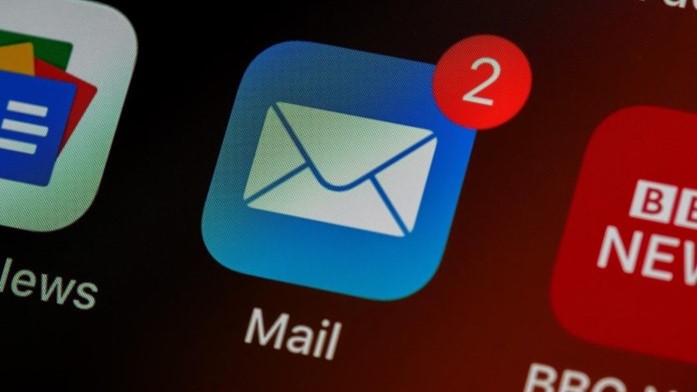
Let’s face it — acquiring new mobile app users isn’t a walk in the park. Competition is fierce and users are smart and picky — they know what application meets the cut and what doesn’t.
Even if you manage to acquire a new user, you then have to work harder to keep them engaged and prevent them from uninstalling the mobile application.
It’s an expensive and time-consuming process that requires a lot of effort, meticulous planning and iterating — and even then there’s no guarantee of success.
That’s why it’s so important to focus on retention from day one. Just because someone downloads your app doesn’t mean they’ll stick around – in fact, the average app loses 77% of its daily active users within the first 3 days after they download.
Whether you are in the beta phase or the alpha phase, retention rates reveal a lot.
Definition: Retention Rate
In simple terms, retention rate is the percentage of users who continue to use an app after downloading it. The retention rate is a key metric for measuring the success of a mobile app.
According to a 2021 benchmark by Upland, “While exact benchmarks vary by industry, mobile apps on
- Average have a 30-day retention rate of 42% and a 90-day retention rate of 25%.
- However, the average 30-day rate broken down by industry ranges from 27% to 43%, but for higher-performing apps, that range is 32% to 66%.”
Calculating retention rate
While, there are plenty of methods marketers use to calculate retention rate, the most common is to take the number of users who log in to your app on Day ‘N’, and divide it by the number of users who log in on Day 0.
For example, if you have 200 users on Day 0, and 100 of them log in on Day 3, your retention rate would be 50%.
Other common metrics include time spent in the app, number of app sessions, number of screens viewed, and number of times the users open it.
So, the key to a high retention rate is clear – you need to give your users a reason to keep coming back to your app. But how do you do that? We discuss that below!
7 ways to increase mobile app user retention rate:
- Focus on excellent user messaging to increase user engagement.
Right from onboarding to in-app, make sure to use messaging to increase user engagement.
Messaging should be clear, concise, relatable, emotionally charged and of course — in line with your brand voice to ensure consistency. Don’t bombard your users with too much information at once, or they’ll get overwhelmed and lose interest.
Instead, focus on one message at a time. Furthermore, your messages need to be timely – don’t wait too long to send them, or they’ll be forgotten.
Finally, make sure your messages are personalized. Generic messages are a turn-off for users, so take the time to segment your user base and send them messages that are relevant to them.
Lastly, use push notifications sparingly, as too many can annoy or irritate the user. 61% of users are likely to use the app more if the push notifications are personalized to their stated preferences and liking.
- Track as much as you can, and iterate often.
In order to improve your app, you need to track as much data as you can and then use that data to make changes and improve the user experience. Today, marketers have access to a variety of tools to track data, such as analytics tools, heatmaps, A/B testing, surveys, and more. Once you have all the data you need, make changes on the side too. Don’t be afraid to experiment – that’s the only way you’ll find what works best.
- Eliminate steps that don’t add value.
User experience is everything when it comes to mobile apps. Users will abandon an app if it’s difficult to navigate — or worse if it’s not doing what they want it to do. That’s why it’s critical to streamline your app’s design and user flow. Each step should be optimized in a way that it becomes the shortest route possible for the user’s end goal.
As good advice, it’s good to read about the heuristics of UX design. Heuristics are rules of thumb that help users quickly and efficiently navigate your app without having to think too much about it.
- Get rid of bugs and crashes.
No one likes using an app that’s buggy or constantly crashing. Its a recipe for disaster to say the least. As per a survey by Dimensional Research, 61% of users expect mobile apps to start within four seconds, while 49% want responses to inputs in two seconds. If an app crashes, freezes or has errors, 53% of users will uninstall it.
Some tips to avoid bugs and crashes are — to collect user feedback at different steps, have a QA thoroughly test your app before you launch it, use a crash reporting tool to track and fix crashes and monitor your app’s performance regularly.
Moreover, if you want users to keep using your app, you need to keep it up-to-date. As new devices and operating systems are released, you need to make sure your app is compatible with the latest versions, takes advantage of new features, and continues to perform well.
- Incentivize users to return.
According to a report, “the most common incentives offered to encourage app downloads to include a discounted item or service for downloading the app (71%), a free item or service for downloading the app (65%), or accrued in-app rewards such as points or coins (63%).” Incentivizing benefits because humans love rewards. It’s a great way to give users a reason to come back to your app, and it doesn’t have to be complicated or expensive. While it may not reap benefits in the short term, it’s a great strategy for the long term.
- Opt for social media login.
Imagine this, you installed an application to purchase a t-shirt, and now the app asks you to provide a laundry list of personal information. Sounds frustrating, right? In general, users are hesitant to create new accounts. To make the registration process as frictionless as possible — offer social media login. In our example, it’s best to let the user add the t-shirt to the cart, and then ask them to provide the information needed to make a purchase.
- Gamify the application.
People love challenges and feel motivated when they overcome them. Gamification is a good concept to keep users engaged. Game mechanics like points, badges, and leaderboards can be used to nudge users to return.
Users need a reason to come back to your app!
If you want to keep your users engaged, then you need to give them a reason to come back to your app.
Use solid user messaging, add key features that are packed with value, offer incentives and rewards, and make it easy for users to accomplish their end goal.
Retention rates are the most important metric for the success of any app. By following the tips above, you can significantly improve your app’s retention rate and keep your users coming back for more.
Like this article, you’ll enjoy these too:



